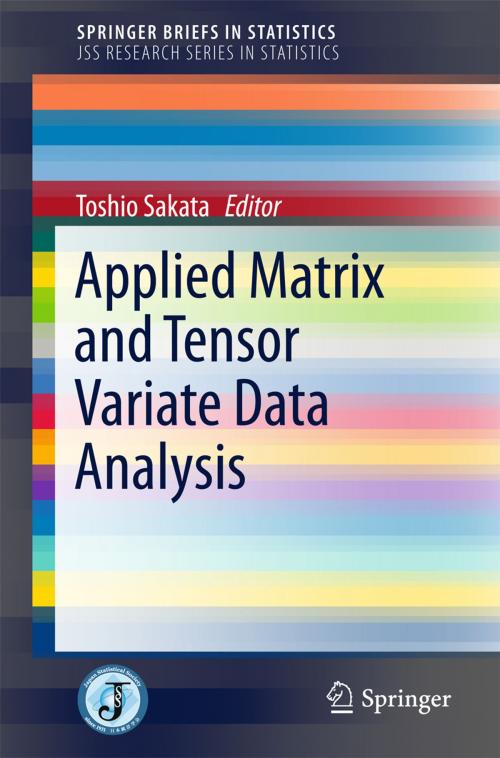Applied Matrix and Tensor Variate Data Analysis
Nonfiction, Science & Nature, Mathematics, Statistics, Computers, Application Software, General Computing| Author: | ISBN: | 9784431553878 | |
| Publisher: | Springer Japan | Publication: | February 2, 2016 |
| Imprint: | Springer | Language: | English |
| Author: | |
| ISBN: | 9784431553878 |
| Publisher: | Springer Japan |
| Publication: | February 2, 2016 |
| Imprint: | Springer |
| Language: | English |
This book provides comprehensive reviews of recent progress in matrix variate and tensor variate data analysis from applied points of view. Matrix and tensor approaches for data analysis are known to be extremely useful for recently emerging complex and high-dimensional data in various applied fields. The reviews contained herein cover recent applications of these methods in psychology (Chap. 1), audio signals (Chap. 2) , image analysis from tensor principal component analysis (Chap. 3), and image analysis from decomposition (Chap. 4), and genetic data (Chap. 5) . Readers will be able to understand the present status of these techniques as applicable to their own fields. In Chapter 5 especially, a theory of tensor normal distributions, which is a basic in statistical inference, is developed, and multi-way regression, classification, clustering, and principal component analysis are exemplified under tensor normal distributions. Chapter 6 treats one-sided tests under matrix variate and tensor variate normal distributions, whose theory under multivariate normal distributions has been a popular topic in statistics since the books of Barlow et al. (1972) and Robertson et al. (1988). Chapters 1, 5, and 6 distinguish this book from ordinary engineering books on these topics.
This book provides comprehensive reviews of recent progress in matrix variate and tensor variate data analysis from applied points of view. Matrix and tensor approaches for data analysis are known to be extremely useful for recently emerging complex and high-dimensional data in various applied fields. The reviews contained herein cover recent applications of these methods in psychology (Chap. 1), audio signals (Chap. 2) , image analysis from tensor principal component analysis (Chap. 3), and image analysis from decomposition (Chap. 4), and genetic data (Chap. 5) . Readers will be able to understand the present status of these techniques as applicable to their own fields. In Chapter 5 especially, a theory of tensor normal distributions, which is a basic in statistical inference, is developed, and multi-way regression, classification, clustering, and principal component analysis are exemplified under tensor normal distributions. Chapter 6 treats one-sided tests under matrix variate and tensor variate normal distributions, whose theory under multivariate normal distributions has been a popular topic in statistics since the books of Barlow et al. (1972) and Robertson et al. (1988). Chapters 1, 5, and 6 distinguish this book from ordinary engineering books on these topics.















